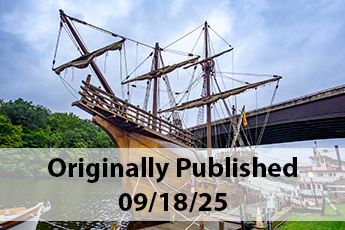Maybe you have played the game where one person whispers something to the person next to them, who whispers it to the person next to them until the message has made its way all the way around the circle back to the first person. By this time, the message is often completely different from what it was when it was first whispered.This fun game illustrates how communication mishaps can lead to a wildly different message being received from what was originally intended. The same thing can happen in financial services, where different languages for standards and formats can lead to costly miscommunication and errors.An Enhanced Messaging StandardIn an effort to create a common language that financial institutions can use for payment messages, the International Organization for Standardization created a new messaging standard called ISO 20022. This enhanced standard for financial messages provides a structured common language that can be used between financial institutions and bank customers so that everyone is on the same communication page.ISO 20022 has been called one of the biggest payments industry changes in decades. Its capabilities are essential to instant payments and will be critical to payment innovations like end-of-day batch and real-time payment processing. The standard introduces new data fields that will allow richer transaction data to be included in payments messages while enhancing straight-through processing and improving the overall customer payments experience. ISO 20022 Adoption in the Financial IndustryIt has been two decades since the ISO 20022 standard was initially launched in 2004, but migration efforts are starting to ramp up as the November 2025 deadline for banks to migrate draws near. Swift migrated all customer and inter-bank payments to ISO 20022 in 2023, while CHIPS is migrating this April and Fedwire will migrate next March. Also, Federal Reserve Banks are planning to implement ISO 20022 messages for Fedwire starting on March 10, 2025 — eight months before the November bank migration deadline and only about a year from now.As for financial institutions themselves, your community financial institution (CFI) may also gain insights from the learnings of larger institutions that have already adopted the new ISO 20022 standard, such as J.P. Morgan Chase. The company adopted ISO 20022 in March 2023 and has a variety of resources available online to help guide others in the transition.Benefits of ISO 20022Many CFIs are understandably feeling a little anxious about the approaching ISO 20022 deadline and the challenges it will present to their staff, not to mention the cost of migration. However, ISO 20022 presents many benefits and opportunities for CFIs and bank customers as well.One of the biggest benefits will be enhanced fraud and financial crime prevention. The structured and expanded payment format will allow more data to be included with every transaction. With elements like LEI and the purpose code, it will be easier to see where payments are going and why they’re being sent. Structured name and address details for senders and beneficiaries will help improve anti-money laundering (AML) and Know Your Customer (KYC) practices, which will make screening more efficient and accurate.Unlike traditional Fedwire payments, where senders try to fit in data wherever they can, the ISO 20022 format is highly structured, with data restricted to specific fields. This will enable artificial intelligence (AI) to detect payment anomalies that could indicate fraud or financial crimes. Fraud investigations will also be reduced, since false positives can be quickly dispensed, leaving more time and resources to devote to true red flags. CFIs will welcome these benefits, given the heavy fraud losses experienced in the industry.Other benefits of ISO 20022 for CFIs and customers include:
- More transparency, greater efficiency, and fewer delays caused by unstructured, incomplete, or inconsistent data.
- Improved customer reconciliation capabilities, due to dedicated reference fields and structured remittance data.
- Greater message harmonization across the payments industry, thanks to a global standard used by all financial institutions worldwide.
In addition, ISO 20022 may enable CFIs to make hyper-personalized offers to customers based on purpose codes such as SALA (salary payments), INTE (interest), and TAXS (taxes). By analyzing traffic patterns for certain codes, you may be able to identify cross-selling opportunities for your CFI.Start Preparing NowNow is the time to devise and implement an ISO 20022 migration plan, if you haven’t done so yet. You can find the latest information and resources to help you learn about and prepare for ISO 20022 on the Federal Reserve website. By planning early, your CFI will be better prepared to take advantage of these and other benefits of this enhanced new messaging standard.




